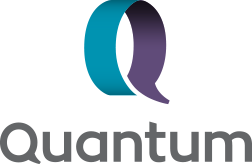Yes, we’re talking about email—that app on your phone or software on your desktop that might have dozens of messages waiting to be read (or deleted).
The fact is, despite being easily ignored, dismissed or buried deep within personal inboxes, email remains one of the most effective and useful tools for businesses looking to spread the word about their products and services.
So how can you use email effectively to cut through the clutter of messages sent out by so many different businesses every day? First, you need to understand the basics.
Understanding Email Metrics
To successfully use email, it’s important to know what success looks like. Developing your email lexicon can help, including picking up terms like bounce rate, open rate, click-through rate and unsubscribe rate.
Open rate is the percentage of people who actually opened the email you sent. For instance, if you sent an email to a list of 100 subscribers and 20 of them open the email, the open rate is 20%. Privacy features have turned this into an inexact science, but it’s important to know how many subscribers open your emails.
Similarly, it’s important to know the bounce rate, or how many emails go undelivered, whether that be because of a full inbox, spam filters or because an email address doesn’t exist anymore. (Be sure to update email addresses or delete old emails from your lists.)
Click-through rate is also important, and it can show you how many and which links were clicked in your email. This gives you important insight into what the people on your list are actually interested in.
Conversely, a high unsubscribe rate is a bad thing, and it means you are either sending to the wrong list, sending too often, or the people on your list want different content than what you are sending. You need to recalibrate, and perhaps you can start by segmenting your lists and changing the messaging.
Carefully Collate Your List of Prospects
In any marketing campaign, it’s vital to know your ideal client or customer. And segmenting your list into multiple lists can allow you to hone your message to address specifically where each person is at in the buying process or marketing funnel.
For instance, you should keep all your current clients in their own list. That way, you can pick and choose exactly what you want to send, especially if you’re sending invitations and holiday or birthday messages.
Another segmented list might include people that you’ve never met that may have signed up for your newsletter on your website or at one of your events. For people you’ve never met, you can go toward a generic educational newsletter, at the end offering a consultation to review their unique situation.
Consider creating a separate list of people whom you met with but didn’t move forward with your services for whatever reason. Remember, unless they told you specifically, you don’t know why a prospect didn’t move ahead. Maybe the timing just wasn’t right. It can take dozens of touches or even years before they might be ready to hire you or recommend you to someone else.
Don’t be intrusive with this list—you are just leaving the door open to them and giving them more information about why you are good at what you do. Some of the emails you craft for this list might take a deeper dive into your services, explaining your unique approach to investments or retirement. Add a specific message at the end that may read something like, “Remember we are always here for you, your family and your friends. If you want to discuss your plan or revisit our services, just give us a call at [phone number].”
Perfect Your Writing and Design
As you probably well know, consumers receive hundreds of emails per day to their various inboxes. In such a saturated medium, you have to stand out. That’s why it’s important to bring a unique voice, message and design to your email campaign—and to understand who the email recipient is and where they are at in their relationship with you.
Remember to always be true to your brand. Every email from Starbucks looks professional and utilizes their dark green logo. Make sure your brand is always consistent and that it builds trust and credibility for you and your firm.
Cut Ties with Personalization and Emojis In Subject Lines
The subject line in an email can make all the difference between an open or a deletion. While conventional email marketing wisdom used to say that using personalization or emojis in the subject line would catch your readers’ attention and lead to higher open rates, the tide has turned.
New research has found that excessive use of emojis and personalization can actually have a negative effect, and can even lead to unsubscribes. The reason may be a combination of people becoming jaded due to overuse, along with very real concerns about big data and personal data privacy breaches.
Give Them a Reason to Come Back
By giving your readers information that intrigues and interests them, you invite them to take the next step. That next step can be something as small as staying on your list or opening your next email, or as big as clicking the link in your email and booking an appointment with you. Further action is the end-goal of any email marketing campaign, and using the best possible email marketing practices can encourage it.
Quantum helps our advisor partners create and execute strategic, branded email campaigns. Call us at 800.440.1088 for more information.
Sources:
https://www.practicalecommerce.com/understanding-email-marketing-metrics-in-2022
https://sproutsocial.com/insights/email-marketing/
As a copywriter, he writes content for blog posts, videos, newsletters and more to help our advisors connect with their clients and stay in front of prospects.





















